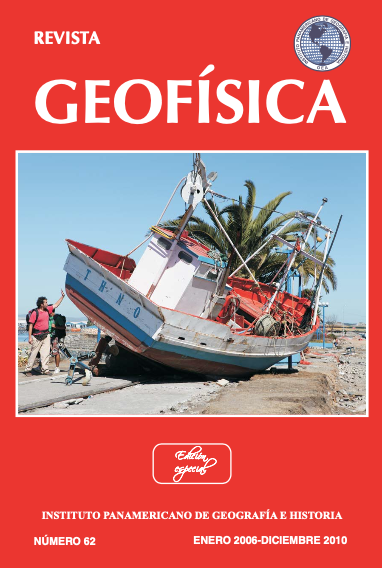Estratigrafía de secuencias en un modelo dos y medio dimensional (2.5-d) del Cono de Rio Grande, Brasil
Main Article Content
Abstract
Geologic data extracted from depth seismic lines and velocity functions permitted to obtain spatial information in different forms: lines (lineaments), vectors (seismic sections), matrix (three dimensional seismic), surfaces (fault planes), polygons, grids (raster, structural model) that accompanied the visualization by means of interactive programs for an image approximation. These could be processed and modeled in other scales or configurations, and the quality of the seismic lines and the geologic mapping depend on sample rate, resolution, data type and computa- tional resources, which upon interacting with seismostratigraphic interpretation, it is possible to integrate geophysics, geomorphology, stratigraphy and sedimentology concepts and apply them to obtain an approximation of the subsurface feature. In this paper, pictures are shown that correspond to snapshots of the Rio Grande Cone’, Brasil, obtained from the model development. Each figure represents one of the different steps in the implementation of the model with depth. This visualiza- tion resulted in a movie, where where the structural, stratigraphic and geomorpho- logic interpretation is included.
Downloads
Article Details
-
Abstract656

